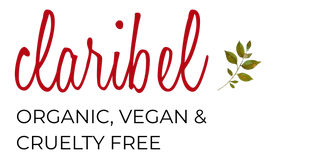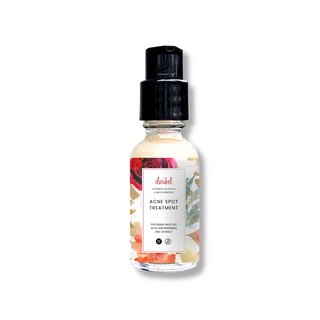
Sun Spots on Legs: How to Reduce Them
Sun spots on legs, also known as solar lentigines or age spots, are dark patches of pigmentation caused by prolonged exposure to the sun. Sun spots on legs can appear as small, flat spots ranging in color from light brown to black. They are most common in people over the age of 40 and are typically found on the legs, arms, hands, and face.
But as most of us know at some point, sun spots on legs can be a source of embarrassment and frustration, as they are noticeable and can be hard to cover up.
Sun spots on legs can also be prevented by taking certain steps. Wearing sunscreen with an SPF of 30 or higher and reapplying it regularly throughout the day can help protect the skin from the sun’s damaging rays. Additionally, wearing protective clothing, such as long-sleeved shirts and wide-brimmed hats, can help block out the sun’s rays. Avoiding tanning beds and spending time in the sun between the hours of 10am and 4pm, when the sun’s rays are the strongest, can also help protect against sun spots on legs.
Our Glycolic Acid Exfoliating Body Cream has all the necessary ingredients to effectively help you on your way to sun spot reduction.
Causes of Sun Spots on Legs
Aging
As we age, our skin undergoes various changes, and one common manifestation is the development of sun spots on legs. These sun spots, also known as solar lentigines or liver spots, are caused by prolonged exposure to the sun's harmful UV rays.
Over time, the skin's ability to repair and regenerate itself diminishes, leading to an accumulation of melanin in certain areas, resulting in dark, pigmented spots on the skin, particularly on the legs, arms, and face. Additionally, aging skin becomes thinner and more susceptible to damage from UV radiation. As a result, the appearance of sun spots becomes more prominent.
Diabetes
Sun spots on legs caused by diabetes is known as diabetic dermopathy, and is a common skin condition associated with diabetes. High levels of blood sugar can damage the blood vessels, leading to poor circulation and reduced blood flow to the skin. As a result, the skin may become more susceptible to injury and slower to heal. This can contribute to the formation of sun spots on the legs, which typically appear as round, brownish patches.
Proper management of diabetes through medication, diet, and lifestyle changes can help control blood sugar levels and reduce the risk of developing sun spots. Additionally, regular skin examinations and early detection of any skin changes are important for individuals with diabetes to prevent potential complications.
Freckles
Freckles can fade as we age, but as we become adults, we might acquire other forms of pigmentation like solar lentigines and moles from excessive sun exposure, basically replacing freckles with sun damage. Keep an eye on these changes, as they change over time.
Hyperpigmentation
Hyperpigmentation occurs when the skin produces an excess of melanin, resulting in dark patches or spots. When this happens on the legs and is exacerbated by sun exposure, it can lead to the development of sun spots. The legs are often exposed to the sun, making them particularly susceptible to sun damage and hyperpigmentation. The UV rays from the sun can stimulate the production of melanin, leading to the formation of sun spots on the legs.
Additionally, hormonal changes, genetics, and certain medications can also contribute to hyperpigmentation, making individuals more prone to developing sun spots on their legs. Prevention and treatment of sun spots on the legs involve protecting the skin from UV radiation through sunscreen use, wearing protective clothing, and targeted treatments such as exfoliation or chemical peels is also very helpful. Understanding the causes and effects of hyperpigmentation is crucial in managing and preventing the development of sun spots on the legs.
Melanoma
Melanoma, a type of skin cancer, can sometimes manifest as sun spots on the legs. Sun spots, also known as solar lentigines or age spots, are areas of increased pigmentation on the skin due to UV exposure. In some cases, these spots can be a sign of melanoma, especially if they exhibit irregular borders, variations in color, or rapid changes in size. Melanoma occurs when melanocytes, the cells that produce pigment in the skin, become cancerous.
As a result, these cells can grow and spread abnormally, leading to the formation of sun spots that may indicate the presence of melanoma. It is crucial to consult a doctor if you notice any changes in sun spots on your legs, such as asymmetry, uneven borders, or changes in color, as early detection and treatment are key to effectively managing melanoma. Regular skin checks and sun protection measures are also essential for preventing and monitoring any potential signs of melanoma.
Sun Exposure
Prolonged and unprotected sun exposure can lead to the development of sun spots on the skin, including the legs. Sun spots, also known as solar lentigines or liver spots, are flat, brown, or black spots that appear on areas of the skin that are frequently exposed to sunlight. The harmful ultraviolet (UV) rays from the sun can stimulate the overproduction of melanin, the pigment responsible for skin color, leading to the formation of these spots.
The legs are particularly susceptible to sun spots due to their frequent exposure to sunlight, especially during outdoor activities. Over time, accumulated sun exposure can result in the appearance of these spots on the legs. Additionally, individuals with fair skin are more prone to developing sun spots due to lower levels of protective melanin.
Our Glycolic Acid Exfoliating Body Cream has all the necessary ingredients to effectively help you on your way to sun spot reduction.
Ingredients & Techniques to Reduce Sun Spots on Legs
It’s possible to fade and reduce sun spots on legs and various parts of the body with the right ingredients. Exfoliation can help the process along, hence the suggestion of glycolic acid and / or vitamin a (retinol).
Arbutin: Arbutin is a natural form of hydroquinone derived from the bearberry plant. It is a safer and effective alternative to hydroquinone and is less cytotoxic to the melanocytes. Look for arbutin in brightening face lotions and dark-spot correctors. Use it gradually in the first few weeks to make sure your skin doesn’t react negatively. You can then increase the frequency of use. Also, as always, make sure you are wearing sunscreen. Arbutin is typically derived from bearberry leaves, which is normally grown in Canada, USA, Europe and Asia.
Glycolic Acid: Glycolic acid can help with a myriad of issues – ranging from acne, acne scarring, dull skin, wrinkled skin, sagging skin, sun spots, discoloration, patched of dark skin, and large pores. Importantly, it has also been used to treat and remove precancerous growth, which is a great option for you and your medical provider to discuss.
Kojic Acid: Kojic acid is derived from mushroom-like fungi during fermentation, and is the second most common natural lightening agent. It prohibits the production of melanin and penetrates the upper layers of the skin causing a lightening effect. Kojic is an excellent natural option that is safe for everyone. Kojic is derived from Aspergillus Oryzae typically grown in East Asia.
Licorice Root: Licorice root contains two ingredients that help with pigmentation: glabridin and liquiritin. Glabridin helps to retrain tyrosinase, an enzyme that produces melanin which leads to pigmentation. Liquiritin helps to break up and remove melanin and pigmentation in the skin. In addition to helping with dark spots, licorice can be soothing and help even out your skin tone. Licorice is Native to Eurasia, it has a long history of use from China to Ancient Egypt to Central Europe.
Niacinamide: Niacinamide, or vitamin B3, can be used to fade age spots and lighten discoloration of the skin. It’s effective with hyperpigmentation because it decreases the number of melanin transferred to pigment-producing cells (melanocytes) to skin cells by more than half. It doesn’t stop the production of melanin, but it reduces the amount that is transferred to the skin. It is extremely stable and not affected by heat or light like other chemical ingredients. Niacinamide is derived from nuts, seeds, and green vegetables worldwide.
Vitamin A (Retinol): Vitamin A can help gradually exfoliate away and lift those damaged layers of skin, specially sun spots, to a faded level or elimination altogether, with time.
Our Glycolic Acid Exfoliating Body Cream has all the necessary ingredients to effectively help you on your way to sun spot reduction:
Conclusion
With a little time and patience, your goal to reduce and eliminate sun spots is a realistic one. Stay away from harsh and damaging chemicals, and stick to the pure plant based ingredients that have shown to fare well in studies.






